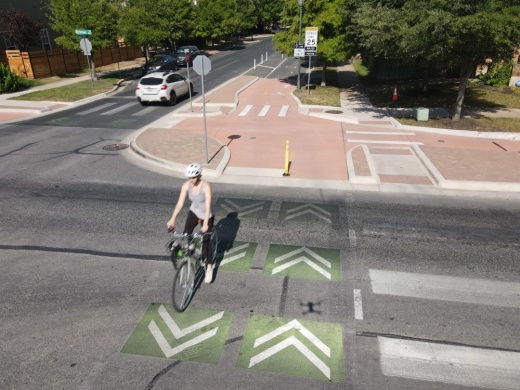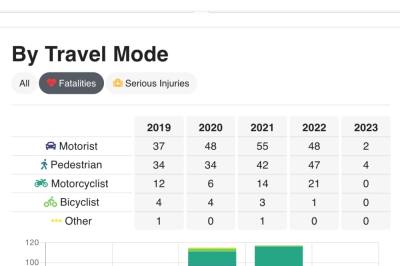Austin received the federal award through the Safe Streets and Roads for All program that specifically targets high-crash sites in cities and counties. Austin is one of 510 recipient communities who received the award nationally.
“On average, an Austinite is killed in a crash every five days, and someone is seriously injured in a crash every 20 hours,” data from Vision Zero that records crashes within Austin geographic boundaries said.
Last year, there were 117 fatalities in Austin, and this year Austin has lost six lives. Five-year data showed the number of pedestrian deaths is consistently on the rise with 47 in 2022, up from 42 in 2021.
According to a city of Austin press release, Austin is looking at 60 such locations with at least half of project funding allocated to underserved communities and high-injury network data.
“We have not decided any specific locations, but those are ones that meet the grant criteria, and that we had asked for funding to try to address some of those locations,” said Lewis Leff, transportation safety officer with the city of Austin.
City staff pointed to the High-Injury Network map developed by Vision Zero, which shows areas of crashes with serious injury and fatal crashes. The city of Austin developed the Vision Zero strategy to reduce fatal crashes to zero and based on this has collected data showing the high-crash areas.
Areas under consideration include Cameron Road from The University of Texas at Austin to beyond Parmer Lane and its intersections, in high-density areas, especially Rundberg Lane, Manchaca Road, South First Street, East Oltorf Street and East Stassney Lane, are also under consideration Also on the cards are areas where more education regarding safety is listed on Vision Zero’s High Injury Network.
Examples of improvements on roadway intersections include crosswalk markings, lighting, crosswalk markings, curb and gutter, or signal heads, Leff said.
Austin applied for the grant money based on the funds it received through 2016, 2018 and 2020 mobility bonds. According to the grant rules, Austin can get up to 80% reimbursement from the federal grant available to the city for five years with up to $22.8 million for the first year.
“Safety improvements have led to a 31% reduction in the annual number of fatal or serious injury crashes at major intersections,” a city of Austin press release said.
When asked about how the allocation would affect the residents in other parts of Austin, Leff talked about the city as one cohesive network.
“Just because you live in one part of town doesn't mean you don't travel on the roads somewhere else; a lot of people travel from Northwest Austin, go to Central Austin for work, or travel to East Austin for restaurants and activities,” Leff said. “It benefits them to have safer roads to get around.”






